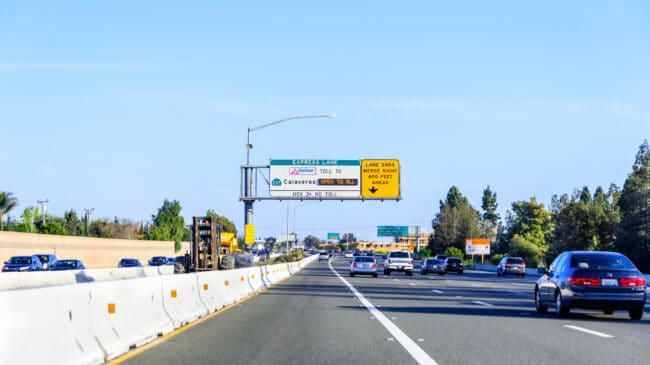As COVID-19 becomes endemic and more Americans return to the office, vehicle miles of travel per capita are reaching or exceeding their pre-COVID peak.
As a result, traffic congestion is returning in many urban areas, particularly during afternoon peak periods.
While the $1.2 trillion Infrastructure Investment and Jobs Act (IIJA) provides some funding dedicated to reducing congestion, not every solution requires a multi-billion dollar highway expansion.
To improve traffic speeds, provide commuters a choice, and enhance bus service, state departments of transportation (DOTs) and local governments have been converting their high-occupancy vehicle (HOV) lanes into high-occupancy toll (HOT) lanes or express toll lanes (ETL).
Despite more than two dozen conversions over the past 15 years, there are still 97 pure HOV lanes in operation.
This brief examines why and how high-occupancy vehicle lanes are converted, how much the conversions cost, and how high-occupancy toll and express toll lanes have performed.
It analyzes the advantages of HOT and ETL lanes compared with HOV lanes and examines the political considerations of conversions.
Finally, the brief lists the HOV lanes that could be converted to HOT lanes or ETLs in the future.

